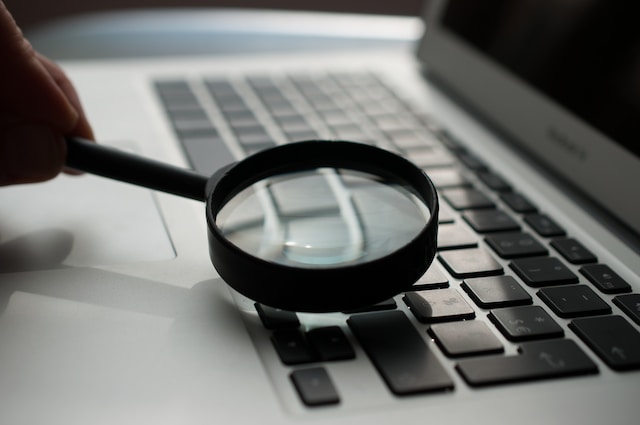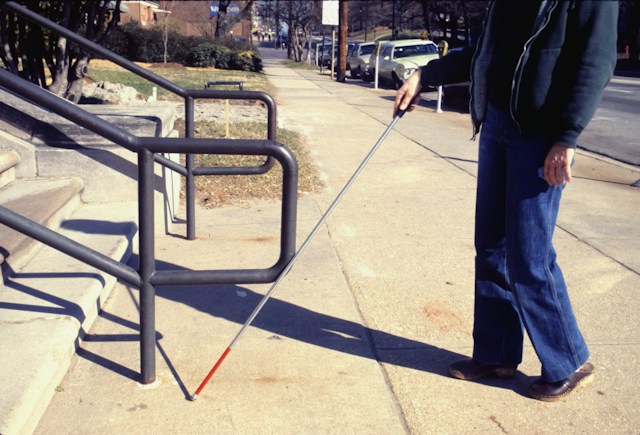Although scientists are working on a way to reverse aging in the eye with various developments like gene therapy, it’s inevitable for many seniors to lose their eyesight. Those with struggling eyes might need some help completing day-to-day activities. Thus, many assistive devices for low vision have appeared on the market.
If you’re interested in learning more about the most popular assistive devices for those with low levels of vision, you’re in the right place. The more you know, the easier it will be to gather the right one for your life. Read on to learn more about ten of our favorite picks, from magnifiers to text-to-speech magnifiers and readers.
1. Hand-Held Magnifiers
First on our list of low-vision assistive devices is a hand-held magnifier. This simple device consists of a rectangular magnifier on the end of a handle, often with a light for help. It’s best for reading things, especially items with small text. They allow a clear and defined image for those with low vision.
Typically, magnifiers are lightweight and affordable. These traits make them very easy to use and carry around for those who like to read often and struggle to see small words.
Related: 7 Signs Your Parents Need More Help

2. Video Magnifiers
There are tons of common eye issues that tend to appear in older age – cataracts, glaucoma, diabetic retinopathy, and age-related macular degeneration. One helpful item to have on hand is a video magnifier when these struggles arise.
A video magnifier takes content and enlarges it on a screen. This enlargement makes it much easier to read or see an image, whether looking through a book or trying to read a recipe.
3. Audio Books
It’s possible to care for your eyes to keep vision issues at bay, but many eye troubles like presbyopia are common with aging. One of the most helpful assistive devices for low vision with these eye diseases is audiobooks. If you love to read but can’t pick out words with your struggling eyesight, audiobooks are the solution.
Most phones can download features like Audible. Also, many e-readers like the Nook are capable of downloading audiobooks, so you don’t have to do everything through a phone. You can listen to your stories and get lost in magical worlds, even with low vision.
4. Audio Labelers
A high-tech option is an audio labeler. This device permits those who struggle with vision to label various items with their voice, making it easier to navigate indoor areas where vision might be limited. A reader or scanner is an easy way to activate these labels for simple understanding.
An audio labeler uses a mic, labels to place on items and a scanner that reads the label while the user is on the move. These are especially helpful in areas like the kitchen, where it’s easy to get things mixed up like flour and sugar.
5. Stand Magnifier
If you don’t want to use a handheld magnifier, another option for a low-vision assistive device is a stand magnifier. These offer up to 15x magnification and sit on a stand, so you don’t have to hold the entire time. They’re more practical for those who can’t hold a device in hand while reading or looking around.
Of course, it’s critical to note that many stand magnifiers aren’t as powerful as hand-held options. In some cases, if you love your holdable magnifier, it’s possible to transform it into a stand magnifier to reduce strain on your hands.
6. Text-To-Speech Magnifier and Reader
A text-to-speech magnifier and reader is a unique all-in-one tool that takes articles and other written works and magnifies and reads them in a natural voice. It’s a helpful tool if you want to read without strain.
Many devices allow you to pick your desired reading voice, save documents, and more. They’re also portable.
7. Enlarged Keyboards
For those who still want to type, enlarged keyboards are helpful assistive devices for those who have low vision. These keyboards have an extra large print for ease of seeing the keys. Just make sure that the print on your computer is also set to large so the user can check their work.
8. Alexa/Google Home
Alexa and Google Home are easy to ask questions to because they require a voice and not sight. Also, there are several actions those with vision issues can ask about these devices.
For example, Alexa and Google Home allow adjustment of volume for music if they are playing songs. They can read Bible verses, explain the weather, and read the news.

9. Canes
Next on our list of low-vision assistive devices is a cane. A cane is beneficial for providing support and helping users determine where things are around them.
With a cane, the walker can engage the environment in a new way. It inspires confidence and will make those with vision issues far more mobile.
Related: What Are Mobility Aids?
10. Liquid Level Indicator
Last but not least is a liquid level indicator. This tool permits users to safely add liquid to a container without overfilling it.
The tool hooks over the edge of a cup. When liquid goes inside, it will buzz when it reaches the sensor, indicating the user to stop.
Final Thoughts
It can be frustrating to access the world around you with sight issues, but luckily, there are many assistive devices for low vision. From using an e-reader to a Google Home, the modern world has advances that aim to improve the quality of life for individuals struggling with their sight. You can use one or multiple of them to make your life much easier.
No matter how bad your vision is, there is a tool out there for you. Whether you need help labeling items with audio notes or using a cane to figure out where lumps and bumps are on the road, assistive devices are an incredible option. There’s also a great diversity of price points to ensure anyone can access at least one of these helpful tools.
If you or your relative has lost a significant level of their vision, it might be time to consider an assisted living facility. Find out more in our article Tips for Choosing an Assisted Living Facility.


















